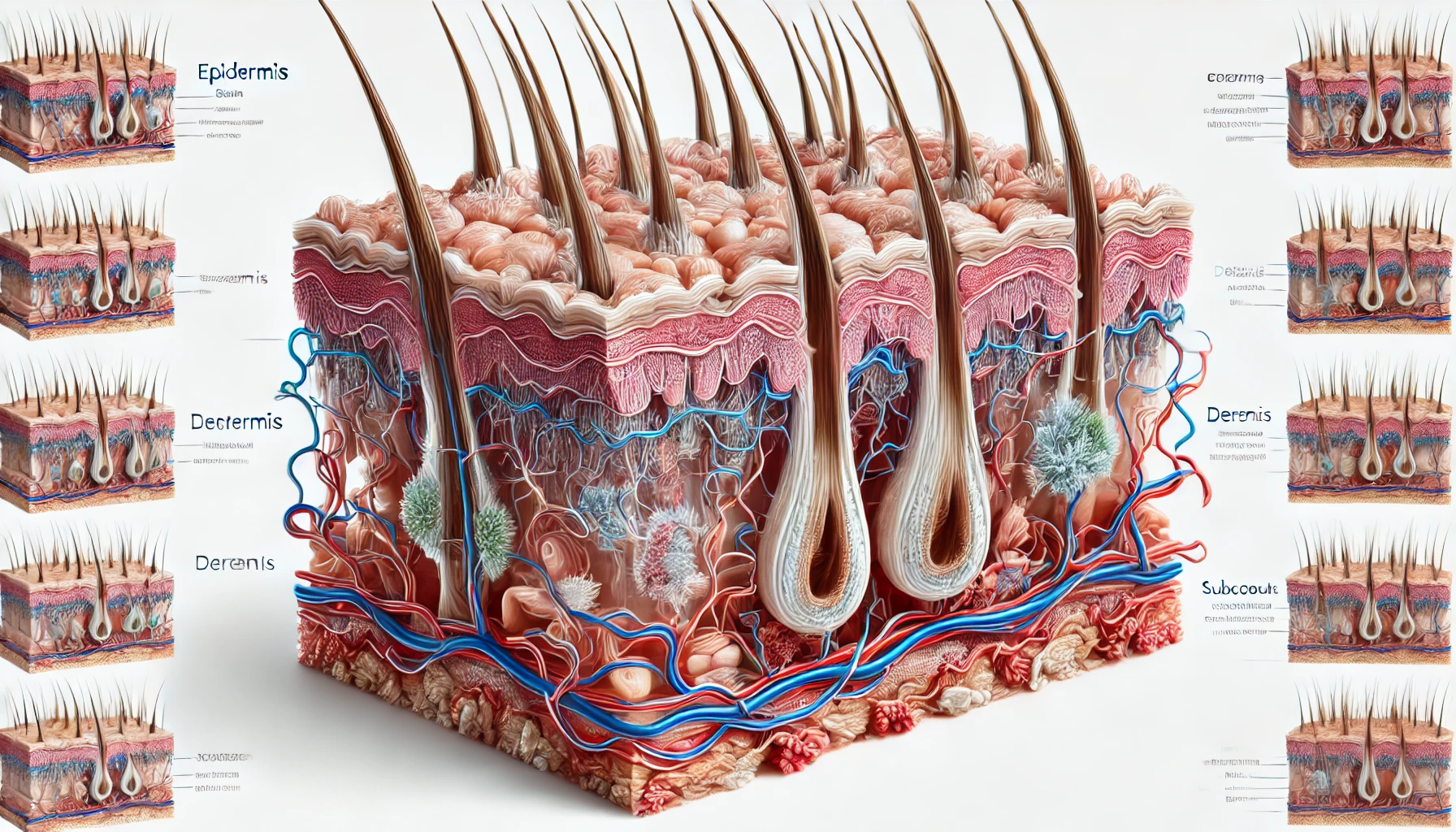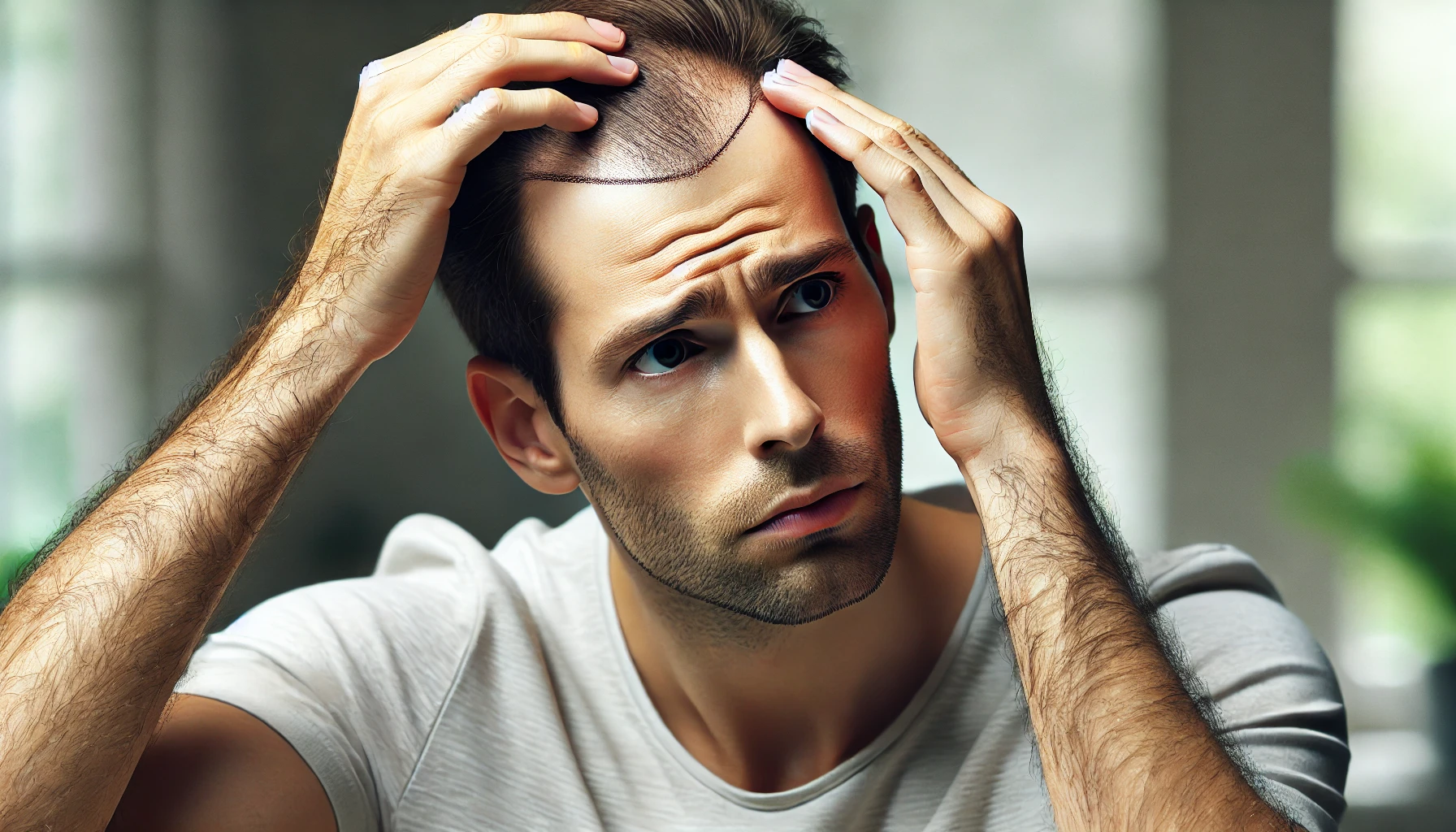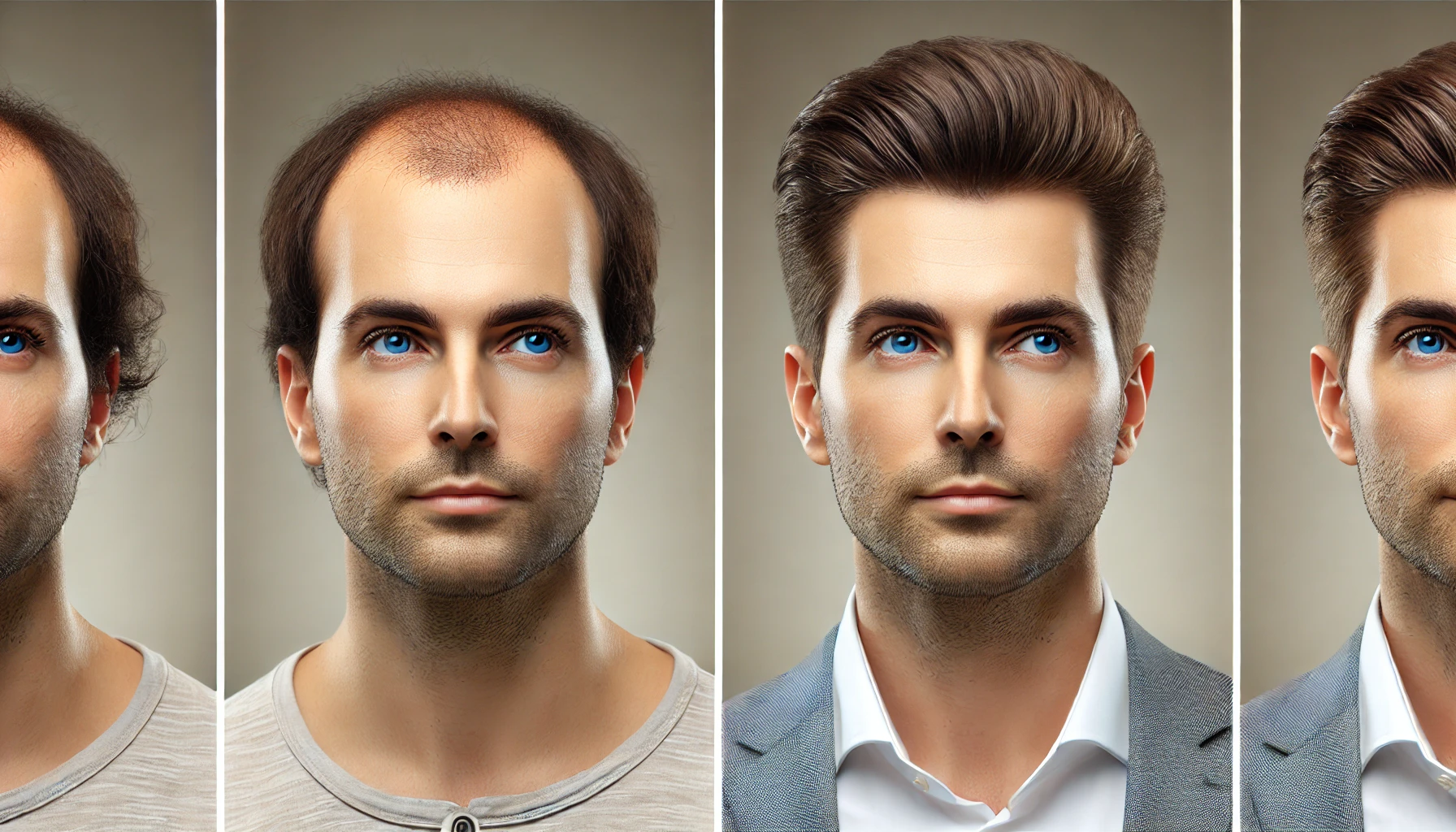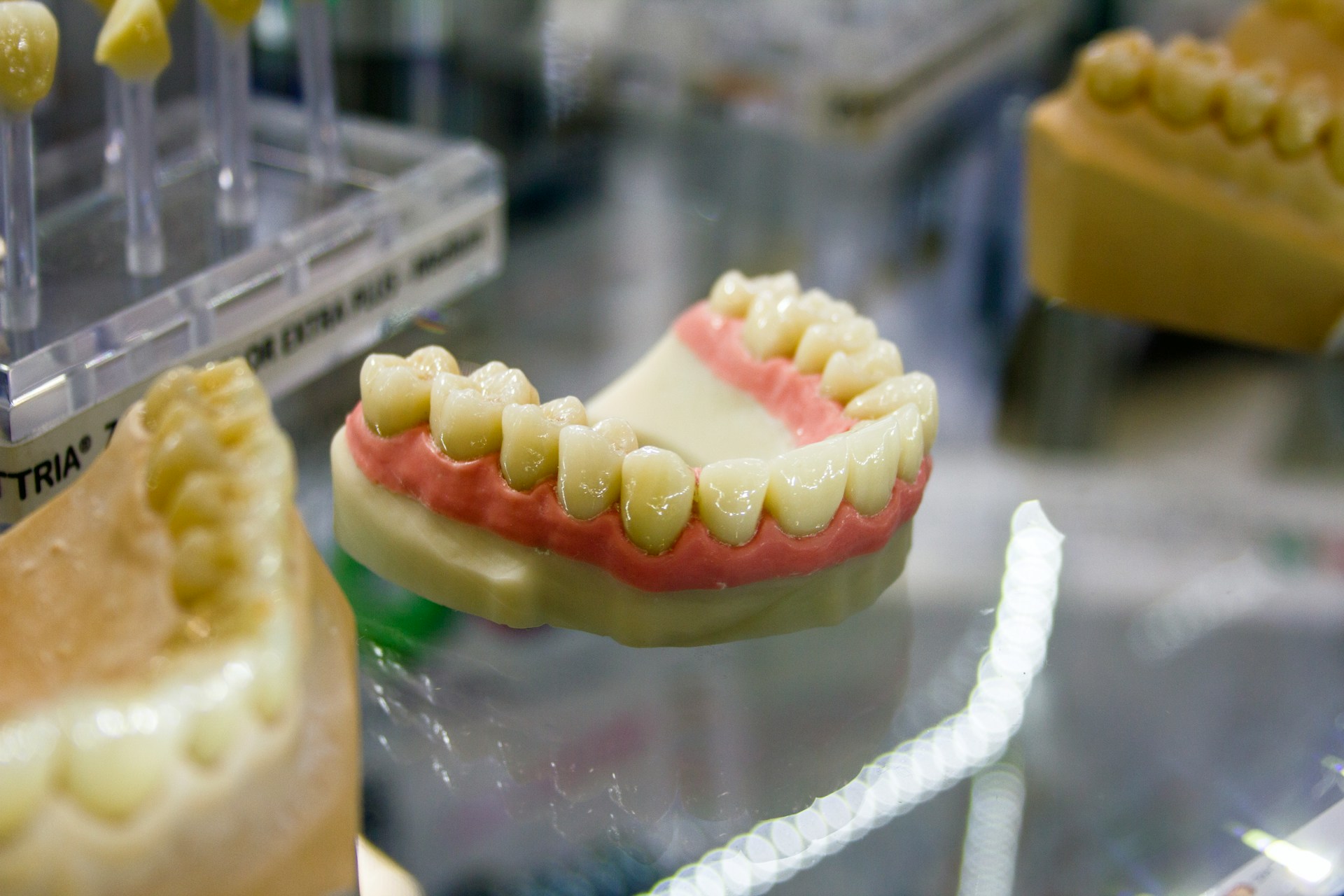Hair transplants have become quite popular as a solution for hair loss, but there are still several misconceptions that cloud public understanding. Many individuals believe that hair transplants are only for men, that the results look unnatural, or that the procedures are excessively painful and expensive.
This article seeks to clarify these myths about hair transplants. By distinguishing fact from fiction, readers can uncover the truth behind these common misconceptions and learn how modern techniques can provide a natural and effective solution for both men and women experiencing hair loss.
What is a Hair Transplant?

A hair transplant is a surgical procedure aimed at restoring hair to areas of the scalp that are bald or thinning. This innovative technique involves relocating hair follicles from a donor area, usually situated at the back of the head, to the areas affected by baldness or thinning.
In recent years, hair restoration options have advanced considerably, allowing individuals to achieve a natural appearance and enhanced hair density, irrespective of their age or gender. Many people pursue this solution to boost their self-esteem and address the societal perceptions linked to hair loss.
Myth #1: Hair Transplants are Only for Men
One of the most enduring misconceptions about hair transplants is that they are solely for men; however, this is not accurate. In reality, hair loss and baldness can affect both men and women due to a variety of factors, including genetic predisposition, age, and hormonal changes.
Women, in particular, encounter distinct challenges related to hair thinning and alopecia, which often leads them to explore hair restoration options as a viable solution. The stigma surrounding female hair loss has diminished over time, resulting in greater awareness and acceptance of hair transplants among women who wish to enhance their appearance and boost their self-confidence.
Is Hair Loss a Problem for Women?
Hair loss is indeed a significant concern for many women, often leading to emotional distress and diminished self-esteem. Unlike men, who may primarily experience receding hairlines, women typically face thinning hair across their entire scalp, which can be more difficult to conceal.
Conditions such as alopecia can affect women of all ages and often result in feelings of embarrassment or self-consciousness. It is essential to understand the psychological impact of hair loss, as this understanding motivates many women to explore various hair restoration options.
Several factors contribute to this widespread issue, with genetics playing a significant role in predisposing women to hair loss. Hormonal changes, particularly during pregnancy, the menopause, or as a result of thyroid imbalances, can also have detrimental effects on hair health. Additionally, certain medical conditions, such as polycystic ovary syndrome (PCOS) or autoimmune diseases, can further complicate the situation.
As these women navigate the visible effects of hair loss, they frequently find themselves caught in a cycle of anxiety and frustration, driving them to seek solutions that may not only restore their hair but also reinstate their confidence and sense of identity.
Can Women Get Hair Transplants?
Indeed, women can and do undergo hair transplants, and the procedure can be remarkably effective in restoring their hairline and enhancing their overall appearance. Many hair transplant clinics now provide specialised procedures that cater specifically to the unique needs of female patients.
It is essential to consult with medical professionals to determine the best hair restoration options available, ensuring that women have realistic expectations regarding both the results and the recovery process.
Among the most popular techniques are Follicular Unit Extraction (FUE) and Follicular Unit Transplantation (FUT), each offering distinct advantages. FUE is known for its minimally invasive approach, leaving no linear scarring, which makes it particularly appealing for women seeking discreet solutions. In contrast, FUT can provide the potential for greater hair density.
Testimonials from women who have undergone these procedures often reflect a high level of satisfaction with the natural-looking results. Many express how the hair restoration journey has positively impacted their self-esteem and confidence. One patient noted that her experience transformed her outlook on life, making her feel youthful and vibrant once again.
Myth #2: Hair Transplants Look Unnatural

Many people hold the misconception that hair transplants lead to an unnatural appearance, but it’s important to note that modern techniques have greatly advanced, allowing for a seamless integration with existing hair.
The evolution of hair transplant technology has introduced sophisticated methods that focus on natural hairline design and optimal growth patterns. Consequently, numerous patients find that their results are not only permanent but also visually appealing, which contributes to high levels of satisfaction with their hair restoration outcomes.
What is the Difference Between Traditional and Modern Hair Transplant Techniques?
The distinction between traditional and modern hair transplant techniques primarily revolves around how hair follicles are extracted and implanted.
Traditional methods, such as Follicular Unit Transplantation (FUT), involve removing a strip of hair from the donor area, which may result in visible scarring. In contrast, modern techniques like Follicular Unit Extraction (FUE) enable the harvesting of individual grafts, leading to minimal scarring and quicker recovery times. These advancements not only enhance the effectiveness of the procedures but also improve the quality of donor hair and overall patient satisfaction.
When assessing these options, it is crucial to consider factors such as recovery times and potential surgical risks. Traditional methods may necessitate longer healing periods and can often be accompanied by more noticeable post-operative discomfort.
On the other hand, modern techniques generally allow for a quicker return to daily activities, making them particularly appealing for individuals with busy lifestyles. Moreover, selecting the right clinic is fundamental; a reputable facility can greatly influence the overall success of the procedure and ensure optimal before and after hair transplant outcomes by utilising the most advanced techniques while minimising complications.
How Natural Do Modern Hair Transplants Look?
Modern hair transplants can produce remarkably natural-looking results, often indistinguishable from a person’s original hair. Achieving this natural appearance relies heavily on advanced techniques and the expertise of a skilled surgeon, who focuses on matching the hair density and growth patterns of the existing hair.
Many patients share their experiences, highlighting a transformation that significantly boosts their self-esteem and confidence, which is evident in the numerous positive testimonials.
The art of hair transplantation requires meticulous attention to detail. Surgeons employ methods such as follicular unit extraction (FUE) or follicular unit transplantation (FUT) to ensure a seamless integration with the patient’s natural hair. Each session is customised to suit the individual’s unique hair type and desired outcomes, further enhancing the authenticity of the results.
Testimonials from satisfied patients frequently emphasise the profound impact on their daily lives. Activities as simple as styling their hair no longer cause anxiety. Many express gratitude for regaining a youthful appearance and the newfound freedom to engage in social interactions without the worry of thinning hair.
Myth #3: Hair Transplants are Painful

Many individuals have apprehensions about hair transplants, primarily due to the belief that the procedure is painful. However, advancements in pain management techniques have transformed it into a relatively comfortable outpatient experience.
Most clinics now use local anaesthesia to numb the scalp, which ensures that patients feel minimal discomfort during the transplant process. By gaining a clear understanding of the recovery time and the pain management strategies in place, potential patients can alleviate their concerns, making the prospect of a hair transplant much less daunting.
What is the Process of a Hair Transplant Procedure?
The hair transplant procedure generally consists of several important steps, beginning with a comprehensive consultation where patients receive education about what to expect and the potential outcomes.
During the outpatient procedure, the surgeon extracts hair follicles from a designated donor area and carefully implants them into the thinning or bald areas of the scalp. This process can take several hours, but patients typically return home the same day, signalling the start of their recovery journey.
Before this, patients engage in detailed discussions with the surgeon to evaluate their specific hair loss patterns, medical history, and aesthetic goals. It is essential for patients to understand the limitations of the procedure, including possible changes in hair growth and the timeframe required to see the final results.
On the day of the operation, local anaesthesia is administered to ensure patient comfort. The surgeon then skillfully performs the extraction and implantation of hair follicles using advanced techniques.
Following the procedure, patients receive post-operative care instructions, such as guidance on how to clean the scalp and manage any discomfort, to promote healing and achieve optimal results.
Regular follow-up appointments are scheduled to monitor progress and address any concerns, highlighting the importance of ongoing patient engagement throughout the entire process.
How is Pain Managed During and After the Procedure?
Pain management during and after the hair transplant procedure is a primary concern for both surgeons and patients alike. Local anaesthesia is administered to ensure that patients remain comfortable throughout the surgery, and most individuals report experiencing only mild discomfort following the procedure.
Implementing effective pain management strategies can significantly minimise side effects and enhance the overall experience of the hair transplant.
Plus the local anaesthesia, clinics typically prescribe medications such as pain relief to further ease any post-operative discomfort. These medications are essential for facilitating a smooth recovery, allowing individuals to rest and heal without the burden of excessive pain.
Patients are encouraged to take an active role in managing their discomfort by adhering to the prescribed medication regimen and using cold compresses to help reduce swelling. It is essential to maintain open communication with the clinic regarding any side effects experienced, as this allows healthcare providers to offer timely interventions and make necessary adjustments to the pain management plan.
By actively participating in their recovery, patients can navigate the healing process with greater ease and comfort.
Myth #4: Hair Transplants are Expensive

Although hair transplant costs may seem steep at first, it’s important to take into account the various factors that influence the price as well as the long-term benefits of the procedure.
Many clinics provide financing options to help make hair restoration more accessible, and in certain situations, insurance coverage might also be applicable.
By understanding the cost factors involved—such as the technique used and the number of grafts required—potential patients can make well-informed decisions.
What Factors Affect the Cost of a Hair Transplant?
Several factors can influence the overall cost of a hair transplant, making it essential for patients to understand what to expect. The number of grafts needed, the specific hair transplant technique chosen (whether FUE or FUT), and the expertise of the medical professionals involved all significantly impact the final price.
Additionally, the initial consultation fees may vary based on the clinic’s location and reputation.
Patients should also take into account the scale of the procedure and its geographical context, as costs can vary considerably from one region to another. In larger urban areas, the demand for specialised hair restoration services often results in higher prices.
Furthermore, the quality of the facilities, the type of anaesthesia administered, and any post-operative care or follow-up sessions can contribute to the total financial commitment. By understanding these various aspects, individuals can make informed decisions and ensure they receive personalised estimates tailored to their specific needs by consulting experienced professionals.
Are There Any Financing Options Available?
Many hair transplant clinics indeed provide financing options to assist patients in managing the costs associated with their procedures. These financing plans typically allow patients to make payments in instalments, which makes hair restoration more accessible for those who might be apprehensive about upfront expenses.
It is advisable to inquire about any potential insurance coverage, as some plans may offer partial reimbursement for hair transplant procedures.
Exploring these financial avenues can significantly benefit individuals considering hair restoration. Various clinics often provide flexible payment plans designed to accommodate different budgets, allowing prospective patients to begin their hair restoration journey without experiencing financial stress.
Additionally, some clinics partner with third-party financing companies to offer extended payment terms, helping to spread out the costs over time. It is essential for anyone interested in a hair transplant to engage in open discussions with their clinic during consultations.
By doing this, they can gain a clearer understanding of their options, easing any financial concerns and enabling them to concentrate on achieving their desired results.
Myth #5: Hair Transplants are a One-Time Fix

A prevalent misconception regarding hair transplants is the notion that they serve as a one-off solution for hair loss. In reality, ongoing maintenance and setting realistic expectations are essential for achieving long-term results.
It is important to recognise that hair loss may persist even after a successful transplant, which means that patients must be proactive about their hair care routines and consider additional treatments if needed.
By understanding the importance of maintenance, patients can better prepare themselves for their hair restoration journey.
Do Hair Transplants Require Maintenance?
Hair transplants indeed require ongoing maintenance to achieve the best possible results and effectively manage any continuing hair loss. Patients are generally advised to adopt specific hair care practices and may need to consider additional hair loss treatments as part of their long-term strategy.
By staying informed and actively engaged in their hair restoration journey, individuals can optimise hair density and attain lasting satisfaction with their outcomes.
To maintain the health and appearance of their hair, it is recommended that individuals follow a gentle washing routine using specialised shampoos that support scalp health. Utilising products with minimal chemicals can also improve the overall quality of transplanted hair.
For those seeking to further strengthen their hair follicles, treatments such as minoxidil or PRP (Platelet-Rich Plasma) therapy may offer significant benefits. Additionally, continuous education about current hair loss trends is essential, as it enables individuals to make informed decisions regarding emerging therapies and preventive measures, ensuring their efforts lead to the desired results well into the future.
What Happens if I Continue to Experience Hair Loss After a Transplant?
If patients continue to experience hair loss after a transplant, it is crucial for them to consult with their medical professionals for guidance on potential further treatments. In certain instances, ongoing hair loss may require additional interventions, such as medical therapies or even more transplant sessions, to achieve the desired hair density.
It is also important to address any psychological effects related to hair loss, as ongoing changes can impact self-esteem and overall well-being.
Seeking a thorough evaluation can help uncover underlying factors that may be contributing to this unexpected hair loss, such as hormonal imbalances or nutritional deficiencies.
Patients may consider exploring options such as:
- Topical solutions
- Oral medications
- Laser therapy
to support hair regrowth. Establishing a regular follow-up schedule with their healthcare provider is essential—not only to monitor progress but also to adjust treatment plans as necessary.
Plus the physical aspects, emotional support can be incredibly valuable. Engaging in counselling or joining support groups can assist individuals in navigating their feelings and rebuilding their confidence during this challenging time.
Frequently Asked Questions on Myths About Hair Transplants Debunked
Can anyone undergo a hair transplant procedure?
No, not everyone is a suitable candidate for a hair transplant. Factors such as age, overall health, and the extent of hair loss are taken into consideration by a qualified hair transplant surgeon before determining if a person is an eligible candidate.
Will it look obvious that I have had a hair transplant?
With advancements in technology and techniques, hair transplants are now more natural-looking than ever before. Skilled surgeons can create a hairline that is undetectable and matches your natural hair pattern, making it difficult for anyone to notice that you have had a transplant.
Will all my new transplanted hair fall out eventually?
No, not all of the transplanted hair will fall out. After the initial shedding, the transplanted hair follicles will go into a resting phase before regrowing. These new hairs will be permanent and will continue to grow naturally like the rest of your hair.
Is a hair transplant a painful procedure?
Hair transplants are typically done under local anesthesia, so the patient will not feel any pain during the procedure. Some patients may experience mild discomfort during the recovery period, but this can be managed with pain medication prescribed by the surgeon.
Can a hair transplant restore my hair to its original density?
While hair transplants can significantly improve the appearance of thinning or balding areas, it is unrealistic to expect it to restore your hair to its original density. The surgeon will work with the existing hair to create a natural-looking hairline and density, but the results may vary depending on the extent of hair loss and the donor area’s availability.
Are hair transplants only for men?
No, hair transplants are not just for men. Women can also undergo a hair transplant procedure to address hair loss caused by various factors such as hormonal imbalances, genetics, or medical conditions. It is essential to consult with a qualified surgeon to determine if a hair transplant is a suitable option for you.







